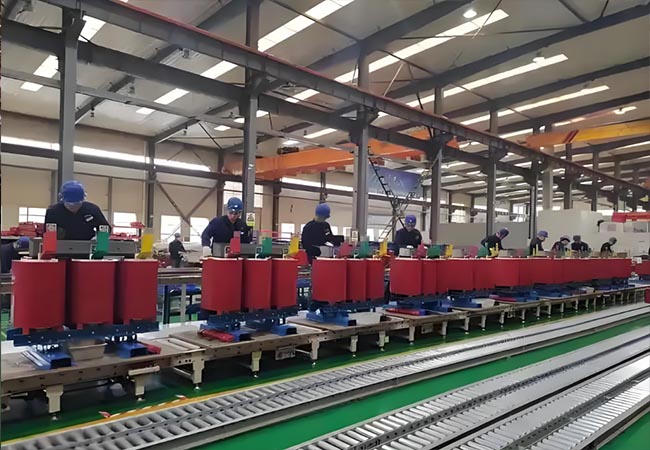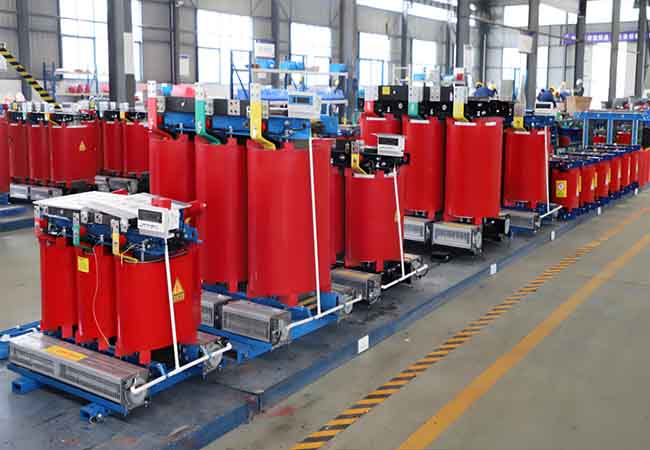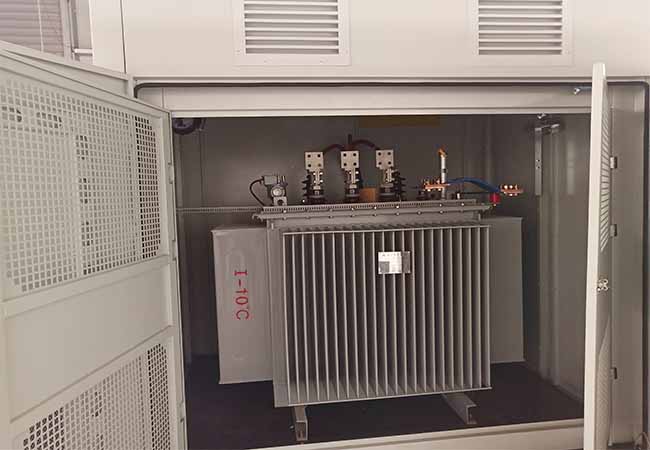What is a dry-type transformer? What are its characteristics?
04-08 2025 | By:
What is a Dry-Type Transformer? What are its Characteristics?
A dry-type transformer is an electrical transformer that uses air or solid insulation materials (e.g., epoxy resin, Nomex paper) instead of liquid coolants like oil. It is widely applied in scenarios requiring high safety, environmental friendliness, and adaptability to harsh environments, such as indoor power distribution, airports, mines, and industrial facilities. Below are its key characteristics and advantages:

1. Core Structural Features
Iron Core: Made of high-quality cold-rolled grain-oriented silicon steel sheets with 45° fully mitered joints to optimize magnetic flux paths and reduce energy loss.
Windings:
High-Voltage Windings: Multi-layer cylindrical or segmented structures, often encapsulated with epoxy resin or quartz sand for enhanced insulation.
Low-Voltage Windings: Foil or layered structures for improved heat dissipation and mechanical stability.
2. Key Advantages
Safety & Environmental Benefits
Fire Resistance: No flammable oil eliminates risks of explosions or fires, making it ideal for densely populated areas and indoor installations.
Pollution-Free: Uses non-toxic, recyclable materials (e.g., Nomex paper, epoxy resin), reducing environmental impact.
Operational Efficiency
Low Energy Loss: Advanced silicon steel and optimized designs minimize no-load and load losses.
Noise Reduction: Noise levels as low as 50 dB (for transformers below 2,500 kVA) due to vibration-dampening structures.
Adaptability
Cooling Methods:
Natural Air Cooling (AN): Suitable for continuous operation at rated capacity.
Forced Air Cooling (AF): Increases capacity by 50% for short-term overloads.
Protection Ratings: IP23 enclosures prevent ingress of dust, moisture, and small animals; ideal for outdoor or humid environments.
Temperature Management
Integrated thermal sensors and control systems monitor winding temperatures, activating alarms or shutdowns to prevent insulation failure.
3. Applications
Dry-type transformers are preferred in:

outdoor dry type transformer
High-rise buildings, data centers, and hospitals (due to fire safety).
Mining and oil platforms (explosion-proof requirements).
Renewable energy systems and railway power supplies.
4. Future Development Trends
Energy Efficiency: Adoption of amorphous alloys and AI-optimized designs to further reduce losses.
High Capacity: Expanding to 20,000 kVA/35 kV models for urban grid upgrades.
Smart Integration: Combining IoT-enabled temperature monitoring, surge protection, and modular designs.
Conclusion
Dry-type transformers excel in safety, efficiency, and versatility, making them indispensable in modern power systems. With advancements in materials and smart technologies, their role in sustainable energy infrastructure will continue to grow.
You may also find these interesting:


